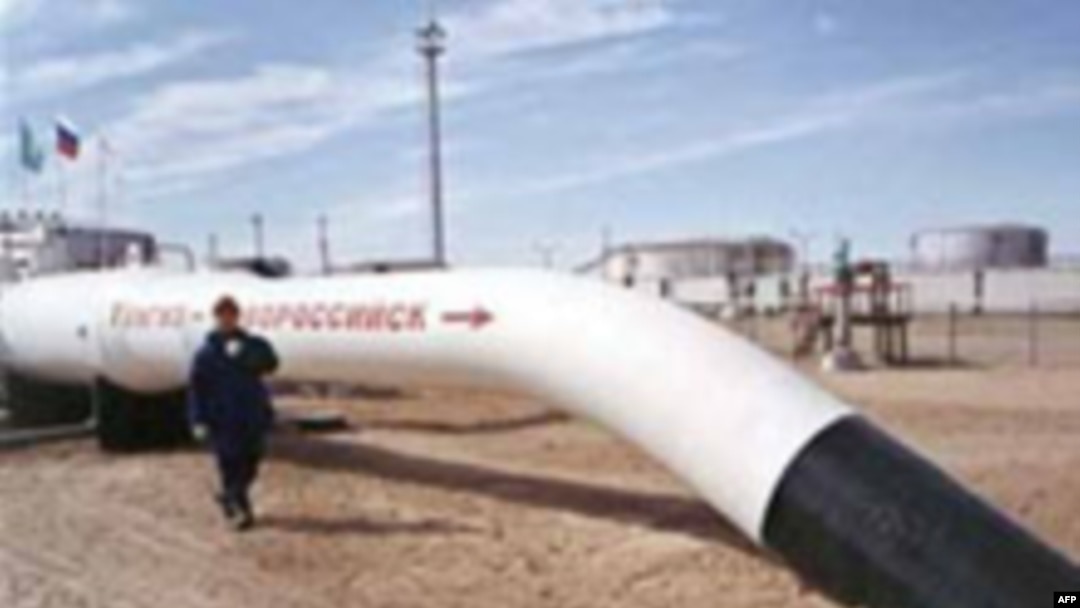Since then, Russia has been able to maintain its monopoly over the hydrocarbons export routes. But U.S. companies have become major players in the contest to develop oil and gas resources. And more recently, Chinese entities have become increasingly present.
Murad Esenov, editor of the Swedish-based "Central Asia and the Caucasus" journal, says the United States, Russia, and China have become the three main forces competing for influence in Central Asia. "This is a normal phenomenon because all those countries have their own interests in Central Asia, especially because of energy resources," Esenov says.
But Anara Tabyshalieva, a senior research fellow at the Institute for Regional Studies in Bishkek, stresses that control over Central’s Asia’s energy resources is only one aspect of the economic race taking place in the region.
"If you come to any market in Central Asia, you can see all goods come from Russia or from China. So both countries are also interested in Central Asia [for trade]," Tabyshalieva says.
Military Race
Besides economy and trade, competing powers have been eager to forge military and political ties in what many regard as a potentially volatile region.
In many ways, Russian, Chinese, and American interests converge on the counterterror and stability fronts. All three powers agree that global terrorism poses a common threat wherever it lays down roots -- as Al-Qaeda did in Afghanistan.
But Moscow and Beijing have jointly opposed the growing U.S. military presence in the region.
That presence has included Washington’s increased military assistance to Central Asian armies as part of the U.S.-led war on terror.
Russia and China have responded in part to America’s increased regional presence by developing the Shanghai Cooperation Organization (SCO). The organization groups China, Russia, and four of the Central Asian republics --Kazakhstan, Uzbekistan, Tajikistan, and Kyrgyzstan.
"Russia and China united to counterbalance the U.S. presence. They use for instance the [SCO] to try to prevent [the expansion of the] U.S. military presence in Central Asia," Tabyshalieva says.
The race for military influence has seen the United States and Russia sometimes engaged in a tit-for-tat race to put military bases into Central Asian countries.
As an example, within two years both U.S. and Russian forces opened two air bases in Kyrgyzstan that are only several dozen kilometers apart.
At the same time, both Russia and China have conducted joint military exercises with Central Asian states.
Diplomatic Differences
But if the great powers sometimes seem to be doing almost the same things in Central Asia, their foreign policies toward the regional governments also contain fundamental difference.
Unlike Beijing and Moscow, Washington is pushing Central Asian governments to institute human rights and democratic reforms. That insistence has raised suspicion and sometimes anger among Central Asian leaders.
In July, Tashkent told the U.S. military to vacate the air base in Kharshi-Khanabad after Washington joined international demands for an independent probe into an uprising and military crackdown in the eastern Uzbek city of Andijon in May.
As the great powers battle for influence in Central Asia, some analysts say that, today, it is still Russia that is the Central Asian republics’ main partner.
Alex Vatanka, the Eurasia editor of the London-based "Jane’s Country Risk," says that since the incidents in Andijon, the Russians and Chinese have had the upper hand, at least in Uzbekistan. "But also the regime of President [Kurmanbek] Bakiev in Kyrgyzstan has come out in fairly plain language and said that for Kyrgyzstan, strategically, in the long-term, Russia counts above all," Vatanka says.
"You’ve seen some American involvement in Tajikistan but that's no way enough to offset Russian influence in that country on the political level, but also economically and on the level of military assistance."
Read the other parts in the "Battle For Central Asia" series:
China-Russia Bloc Challenges U.S. In Region
China Brings Electronics, But Not Democracy
Russia And U.S. Often At Odds In Region
Iran, Turkey Struggle To Influence Region
RFE/RL Central Asia Report
SUBSCRIBE For regular news and analysis on all five Central Asian countries by e-mail, subscribe to "RFE/RL Central Asia Report."


